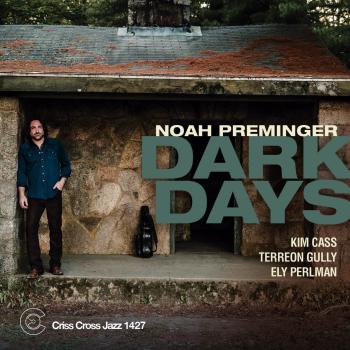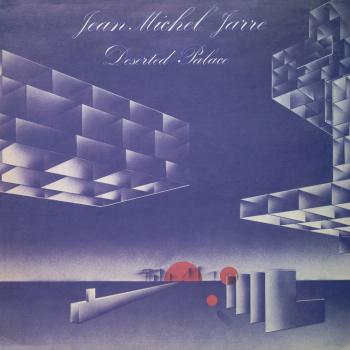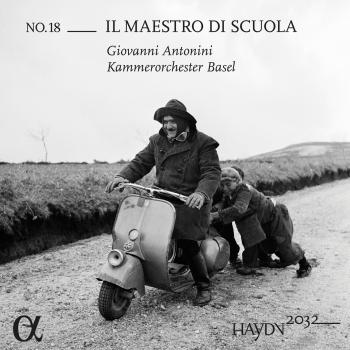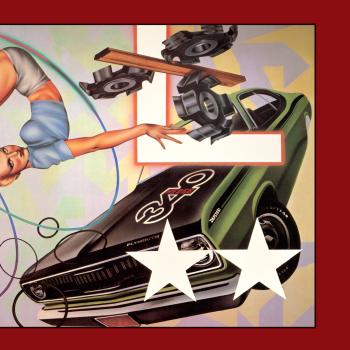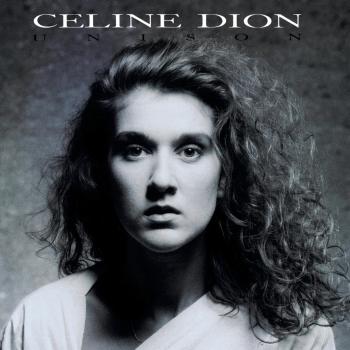
Spring (Remastered) Anthony Williams
Album Info
Album Veröffentlichung:
1965
HRA-Veröffentlichung:
30.04.2014
Das Album enthält Albumcover
Entschuldigen Sie bitte!
Sehr geehrter HIGHRESAUDIO Besucher,
leider kann das Album zurzeit aufgrund von Länder- und Lizenzbeschränkungen nicht gekauft werden oder uns liegt der offizielle Veröffentlichungstermin für Ihr Land noch nicht vor. Wir aktualisieren unsere Veröffentlichungstermine ein- bis zweimal die Woche. Bitte schauen Sie ab und zu mal wieder rein.
Wir empfehlen Ihnen das Album auf Ihre Merkliste zu setzen.
Wir bedanken uns für Ihr Verständnis und Ihre Geduld.
Ihr, HIGHRESAUDIO
- 1 Extras 08:08
- 2 Echo 05:02
- 3 From Before 06:53
- 4 Love Song 08:23
- 5 Tee 10:31
Info zu Spring (Remastered)
Startling! This album is one of two that a young Tony Williams cut for Blue Note, back when he was just hitting the age of 20, and when he was already blowing the minds of masters like Jackie McLean (who first hired him) and Miles Davis (who stole him from Jackie for his own group!) with an approach to drumming that was freed from usual time constraints. Williams conception was so unique, other young modernists -- like the album's Wayne Shorter, Herbie Hancock, and Sam Rivers -- quickly benefited from his presence, as you'll hear in this amazing session that sounds very little like any other Blue Note release. Williams wrote all of the tracks, but the style is much freer than any sense of composition might imply -- and the group is shaken up differently from track to track.
Drummer Tony Williams recorded „Spring“, his groundbreaking sophomore album, when he was only 19 years old. Despite his youth, however, he was already a veteran of the jazz scene, having played with luminaries such as Miles Davis, Jackie Maclean, and Eric Dolphy. His played all over the kit, and though his tricky, unorthodox time-keeping might sometimes give the impression of wild unpredictability, he always managed to keep a tight rein over the momentum of any session in which he participated. His work on „Spring“ is only surpassed by his equally mesmerizing playing on Eric Dolphy's seminal „Our To Lunch“, to which „Spring“ is often compared.
Tony Williams, drums
Sam Rivers, tenor saxophone (on tracks 1,3,4,5)
Wayne Shorter, tenor saxophone (on tracks 1,3,5)
Herbie Hancock, piano
Gary Peacock, upright bass
Recorded at the Van Gelder Studio, Englewood Cliffs, New Jersey on August 12, 1965
Produced by Alfred Lion
Digitally remastered
Tony Williams
was regarded by many shrewd observers as the greatest jazz drummer of his era. He was both an inspiration and a profound influence to countless young drummers, and his innovative explorations, notably with the classic Miles Davis Quintet of the Sixties, were a major factor in shaping the development not only of small-group jazz, but also jazz-rock fusion.
Although born in Chicago, Williams family moved to the Boston area when he was two, and he grew up there. His father, Tillmon Williams, played saxophone, and he encouraged his son's musical interests from a very early age. That included taking the boy to sit in at gigs in clubs around the area, where he became something of child prodigy, and was said to be well known enough by the age of 11 to visit the clubs and play on his own.
He took lessons from a fine locally-based jazz drummer, Alan Dawson, and by the age of 15 had shared a band stand with both Art Blakey and Max Roach. By then, he was already well known in the area as a freelance musician, and in 1959 began an important association with Sam Rivers, one of the most distinctive and forward-thinking jazz musicians in Boston. The saxophonist became something of a mentor to the young drummer.
He played for a short time with alto saxophonist Jackie McLean in 1962 (and returned for the recording of One Step Beyond in 1963), an association which brought him to the notice of Miles Davis. The trumpeter was in the throes of putting together a band to replace the great quintet and sextet of the late-50s, a legendary outfit which had recorded such classics as Milestones and Kind of Blue, as well as the famous collaborations with Gil Evans on Sketches of Spain and Porgy and Bess.
The drummers in those bands, Jimmy Cobb and Philly Joe Jones, had been important influences on Williams's developing style, which would seem to indicate a daunting prospect for the 17-year old drummer. Lack of confidence, however, did not seem to play much part in his make-up. In a 1979 interview, he said that Miles's offer "felt like the most natural thing in the world for me. I was prepared. I knew all of his music. I had studied everything he had done up to that point. I felt deep down that I was without question the best drummer for the job."
In his Autobiography, Miles described the revelation of finding the drummer in typically colourful fashion. His initial approach had to await the fulfillment of the drummer's committments to McLean, but Miles was not a man to be put off when his mind was made up, and he accepted Williams's assurance that "he had Jackie's blessing to join my band after they finished those gigs. Man, just hearing that little motherfucker made me excited all over again. Like I said earlier, trumpet players love to play with great drummers and I could definitely hear right away that this was going to be one of the baddest motherfuckers who had ever played a set of drums."
Miles paired Williams with bass player Ron Carter and pianist Herbie Hancock, and laid the foundation for a band which, completed by saxophonist Wayne Shorter (Sam Rivers occupied that chair briefly in 1964), set about redefining the roles of soloist and rhythm section in small group jazz, in what developed as an increasingly fierce dialogue. According to Miles, "Tony was the fire, the creative spark" which launched the band into new areas of creation, and the full impact of his energising enthusiasm and innovative approach to the drums became evident as he more than confirmed Miles's (and his own) judgement of his capabilities.
Along with Elvin Jones, who was finding his own distinctive path through the dense musical maelstrom of the John Coltrane Quartet, Williams revolutionised jazz drumming. He could play conventional jazz patterns with breathtaking precision and lightness of touch, but had also absorbed something of the early free-form experiments of the 1960s (in part from Sam Rivers) into his playing, and brought that freedom to bear in a way which none of Miles's great drummers of the previous decade had attempted.
Some players found both his intensity and his unconventional handling of time and assymetric rhythmic accents disconcerting, but Miles revelled in the challenge, and the quintet provided Williams with the perfect setting in which to develop his increasingly individual musical voice. He became an equal creative partner with the horn players, and shifted the whole emphasis of the drummer's role in the process.
He remained with Miles throughout the decade, until the middle of 1969, but was also playing and recording with other leaders in those years, including the saxophonist Eric Dolphy (he was the drummer on the classic Out To Lunch album of 1964, one of the crucial documents of the era), pianist Herbie Hancock, and his old mentor, Sam Rivers. He recorded as a leader in his own right for Blue Note, beginning with the album Life Time in 1964, a name which he would revive for the first group of his post-Miles career.
When Williams left the group in 1969, Miles was moving into the jazz-rock fusion era. The drummer had played on the sessions which became In A Silent Way, widely regarded as the harbinger of fusion, and decided to try his own hand in the new music. He formed the first of several versions of Lifetime, with guitarist John McLaughlin, the brilliant organ player Larry Young (also known as Khalid Yasin), and, following the break-up of Cream, Scottish bass player Jack Bruce. The band was highly regarded by critics and other musicians, but never achieved the kind of commercial success enjoyed by Miles himself, his fellow quintet members Wayne Shorter (in Weather Report) and Herbie Hancock, or McLaughlin in his subsequent Mahavishnu Orchestra.
Disillusioned, the drummer withdrew from performing for a couple of years in the mid-70s, then returned to an acoustic jazz setting in 1976 with the stellar VSOP band, a virtual reformation of the Davis quintet which reunited him with Hancock, Shorter and Carter, plus trumpeter Freddie Hubbard (a later line-up included the then up-and-coming trumpet star Wynton Marsalis, and Williams also featured on Marsalis's debut album in 1981).
The drummer continued to lead his own groups in the 1980s, and recorded a number of albums as leader for Blue Note. In the 1990s, he toured and recorded with the four members of the quintet once again, this time as an overt Miles Davis tribute band, with Wallace Roney on trumpet, although internal tensions within the band grew increasingly discernible.
Ironically, his death after what should have been a routine operation came at a time of renewed recording activity, with the release of an orchestral fusion album, Wilderness, on his own Ark 21 label, and an acoustic jazz trio album. In a final twist of irony, the latter album marked his return to Columbia, the label which issued the Miles Davis albums which posterity will see as the most important of his many contributions to contemporary jazz. (www.jazzhouse.org / The Scotsman, 1997)
Dieses Album enthält kein Booklet



